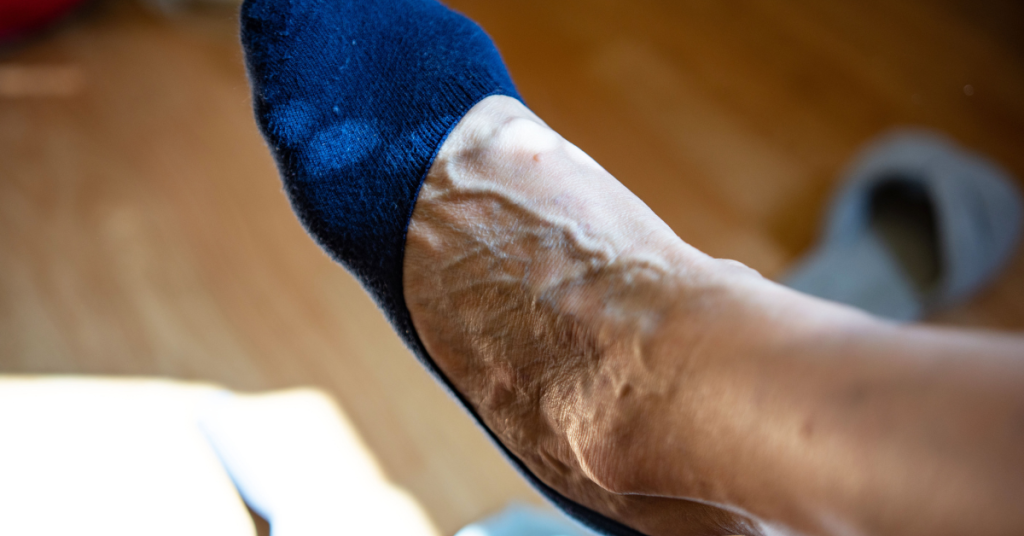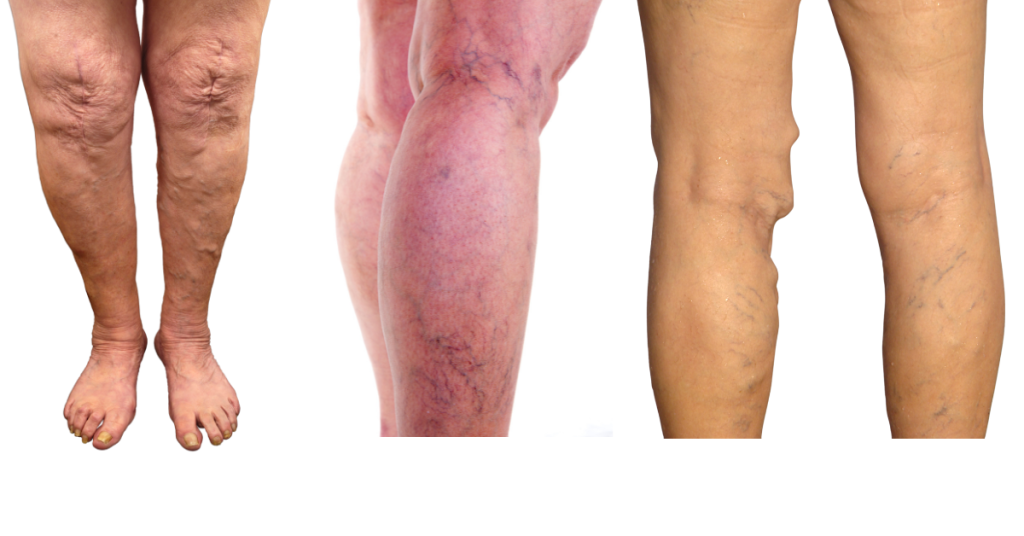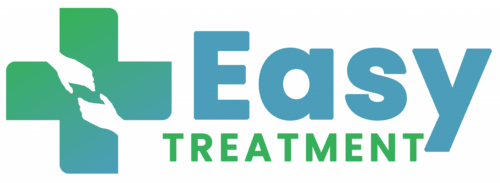Are your legs feeling heavy and swollen after standing for too long? Do you notice twisted, bulging veins appearing on your legs? These could be signs of varicose veins, a common but often misunderstood condition that progresses through distinct stages.
Ignoring varicose veins can lead to serious complications, including ulcers and blood clots. Recognizing the different varicose veins stages early can help you seek timely treatment and prevent worsening symptoms. At Easy Treatment, we aim to educate and guide you through each stage of this condition so you can take proactive steps to manage your vein health effectively.
In this comprehensive guide, we’ll cover:
Prevention tips to stop varicose veins from worsening
1. What varicose veins are and how they develop
2. The five stages of varicose veins
3. Common varicose veins problems
4.. How varicose veins are treated at different stages
What Are Varicose Veins and How Do They Develop?
Varicose veins occur when the valves in your veins fail to function correctly. These valves are supposed to ensure blood flows upward toward the heart. When they weaken or become damaged, blood pools in the veins, causing them to stretch and twist.
This process doesn’t happen overnight. It develops in stages, ranging from mild spider veins to severe complications like ulcers and blood clots.

Stages of Varicose Veins: From Mild to Severe
Stage 1: Spider Veins (Telangiectasia)
The first stage of varicose veins is characterized by small, thin, web-like veins visible on the skin’s surface. These are known as spider veins.
Appearance:
- Red, blue, or purple thin veins forming a web-like pattern
- Most commonly seen on legs and face
Symptoms:
- Usually painless
- Some people experience mild itching or tingling
Risk Factors:
- Genetics
- Hormonal changes (pregnancy, menopause)
- Prolonged standing or sitting
Prevention & Management Tips:
Wear loose clothing to prevent pressure on veins
Exercise regularly to promote circulation
Avoid prolonged sitting or standing
Stage 2: Enlarged Varicose Veins
At this stage, veins become enlarged, twisted, and bulging, often leading to discomfort.
Appearance:
- Dark blue or purple twisted veins
- Bulging veins that protrude from the skin
Symptoms:
- Heaviness in the legs
- Throbbing pain and discomfort after standing
Impact:
- Affects mobility and daily comfort
Pro Tip: Wear compression stockings to reduce discomfort and prevent worsening symptoms.ins.
Stage 3: Leg Swelling (Edema)
As blood pooling increases, fluid retention causes noticeable swelling.
Appearance:
- Swelling around the ankles and calves
- Worsens as the day progresses
Symptoms:
- Tightness in the skin
- Fatigue and leg discomfort
Management Tips:
Stay hydrated and avoid salty foodsention.
Elevate your legs regularly
Stage 4: Skin Changes and Discoloration
Skin around the affected veins begins to change due to poor circulation.
Appearance:
- Skin becomes reddish-brown or purple
- Dry, itchy, irritated patches
Symptoms:
- Persistent itching and irritation
Did You Know? Skin changes indicate chronic venous insufficiency, a serious condition requiring medical requiring medical attention.
Stage 5: Venous Ulcers
This is the most advanced stage of varicose veins and represents a severe complication.
- Appearance: Open sores or wounds, usually near the ankles, that are slow to heal.
- Symptoms: Severe pain, risk of infection, and difficulty walking.
- Cause: Long-term pressure and inflammation damage the surrounding tissue, leading to ulcers.
Emergency Alert: Venous ulcers require immediate treatment to prevent infections or further complications.
Varicose Veins Problems: How They Impact Your Life
Varicose veins problems are more than just skin deep. If untreated, they can lead to:
- Chronic Pain and Fatigue: Persistent aching in the legs, making daily activities harder.
- Swelling and Skin Issues: Difficulty wearing shoes and changes in skin texture.
- Risk of Blood Clots: Severe cases may result in deep vein thrombosis (DVT), a potentially life-threatening condition.
- Emotional Impact: The appearance of varicose veins can cause embarrassment and affect self-esteem.
Understanding these stages can help you act before the condition worsens.

How Varicose Veins Are Treated
If you’re wondering how varicose veins are treated, the approach depends on their stage and severity. Modern treatments range from non-invasive therapies to surgical options.
1. Lifestyle Adjustments
For early stages, adopting healthy habits can slow progression:
- Exercise: Activities like walking, swimming, or yoga improve blood circulation.
- Weight Management: Shedding extra pounds reduces pressure on your veins.
- Leg Elevation: Resting with your legs elevated above heart level can ease swelling.
2. Compression Stockings
Compression therapy involves wearing specially designed stockings that squeeze your legs to promote blood flow. These are particularly effective for mild to moderate varicose veins.
3. Non-Invasive Procedures
Modern technology offers minimally invasive solutions, such as:
- Laser Therapy: Uses heat to seal damaged veins, redirecting blood flow.
- Sclerotherapy: A chemical injection causes veins to collapse and fade over time.
4. Advanced Medical Treatments
For advanced stages, more intensive treatments may be necessary:
- Endovenous Ablation Therapy: Uses heat or radiofrequency to close large varicose veins.
- Surgical Options: Procedures like vein stripping or ligation physically remove affected veins.
At Easy Treatment, we offer personalized care tailored to your specific stage of varicose veins. Our goal is to ensure you feel comfortable and confident at every step.
Preventing Varicose Veins from Progressing
While not all varicose veins can be prevented, adopting these habits can reduce your risk:
- Avoid standing or sitting for long periods without moving.
- Wear loose-fitting clothing that doesn’t restrict blood flow.
- Stay hydrated and eat a diet rich in fiber and low in salt.
- Consult a doctor if you notice early symptoms like spider veins or leg discomfort.
Take Charge of Your Vein Health
Varicose veins progress through distinct stages, each bringing its own challenges. Recognizing the signs early can save you from the discomfort and complications of advanced stages. Whether you’re in the early stages or dealing with more severe symptoms, there are effective solutions available to restore your vein health.
At Easy Treatment, we’re committed to providing advanced care for every stage of varicose veins. If you’re unsure where to start, visit our Ask Questions page to learn more about how varicose veins are treated and explore the options that best suit your needs.
Don’t wait—take the first step toward healthier, pain-free legs today!

